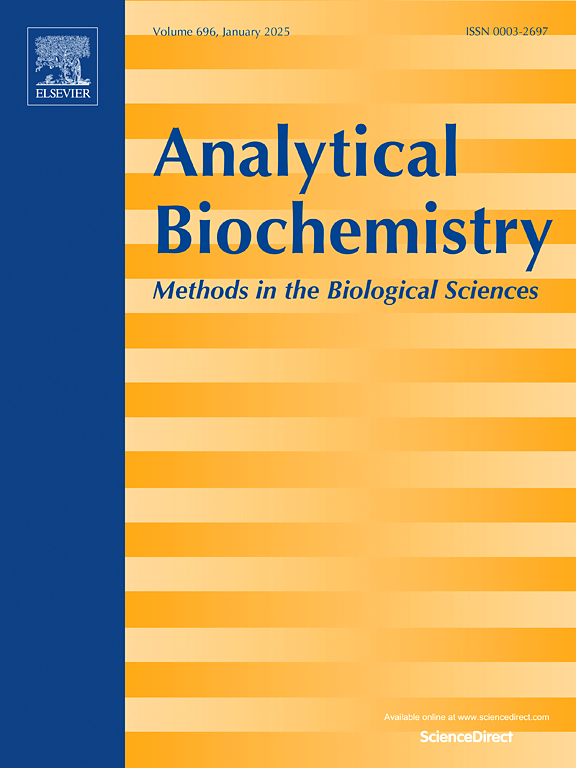A fundamental approach to buoyant density determination by DGE-AUC
IF 2.5
4区 生物学
Q2 BIOCHEMICAL RESEARCH METHODS
引用次数: 0
Abstract
Density gradient equilibrium analytical ultracentrifugation (DGE-AUC) was first introduced in 1957. The method saw significant use over the following decade. Since then, DGE-AUC has been used by polymer and genomic DNA fields. Emerging medicine has revived interest in the technique for characterization of cell and gene therapeutics. While several model-dependent approaches exist to determine density at any point along a density gradient at equilibrium, there is ample evidence in the vast density gradient literature that indicates the presence of pressure effects, solvent compressibility, and general nonideal behavior of the gradient medium that are not easily accounted for in models describing the density gradient. These complications mandated the general use of reference materials and standard conditions. With an interest in buoyant density determination for particles of various composition, an approach that does not rely on standards is desirable. The current manuscript details a fundamental model-independent method for determination of buoyant density by DGE-AUC. An examination of this novel method is presented in the context of NISTmAb and DNA in a CsCl gradient, as well as polystyrene beads in a sucrose gradient. The method described herein is broadly applicable to determine the buoyant density of a particle in a density gradient medium.

用DGE-AUC测定浮力密度的基本方法。
密度梯度平衡分析超离心(DGE-AUC)于1957年首次引入。在接下来的十年里,这种方法得到了广泛的应用。从那时起,DGE-AUC已被用于聚合物和基因组DNA领域。新兴医学重新唤起了人们对细胞和基因治疗表征技术的兴趣。虽然存在几种依赖于模型的方法来确定平衡状态下密度梯度任意点的密度,但大量密度梯度文献中有充分的证据表明,在描述密度梯度的模型中,存在压力效应、溶剂压缩性和梯度介质的一般非理想行为。这些复杂情况要求普遍使用参考物质和标准条件。考虑到对各种成分颗粒的浮力密度测定的兴趣,不依赖于标准的方法是可取的。目前的手稿详细说明了一个基本的模型独立的方法来确定浮力密度的DGE-AUC。在NISTmAb和DNA在CsCl梯度,以及聚苯乙烯珠在蔗糖梯度的背景下,这种新方法的检查提出。本文所述的方法广泛适用于确定密度梯度介质中粒子的浮力密度。
本文章由计算机程序翻译,如有差异,请以英文原文为准。
求助全文
约1分钟内获得全文
求助全文
来源期刊

Analytical biochemistry
生物-分析化学
CiteScore
5.70
自引率
0.00%
发文量
283
审稿时长
44 days
期刊介绍:
The journal''s title Analytical Biochemistry: Methods in the Biological Sciences declares its broad scope: methods for the basic biological sciences that include biochemistry, molecular genetics, cell biology, proteomics, immunology, bioinformatics and wherever the frontiers of research take the field.
The emphasis is on methods from the strictly analytical to the more preparative that would include novel approaches to protein purification as well as improvements in cell and organ culture. The actual techniques are equally inclusive ranging from aptamers to zymology.
The journal has been particularly active in:
-Analytical techniques for biological molecules-
Aptamer selection and utilization-
Biosensors-
Chromatography-
Cloning, sequencing and mutagenesis-
Electrochemical methods-
Electrophoresis-
Enzyme characterization methods-
Immunological approaches-
Mass spectrometry of proteins and nucleic acids-
Metabolomics-
Nano level techniques-
Optical spectroscopy in all its forms.
The journal is reluctant to include most drug and strictly clinical studies as there are more suitable publication platforms for these types of papers.
 求助内容:
求助内容: 应助结果提醒方式:
应助结果提醒方式:


